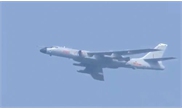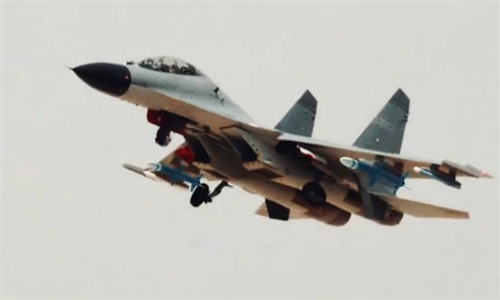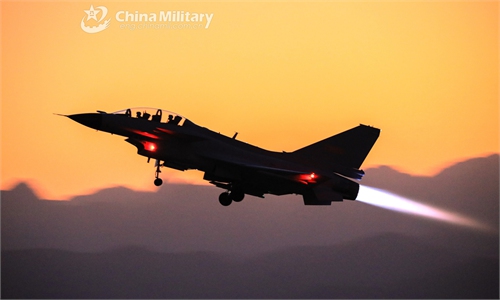
A formation of Dongfeng-41 intercontinental strategic nuclear missiles takes part in a military parade celebrating the 70th anniversary of the founding of the People's Republic of China in Beijing, capital of China, October 1, 2019. Photo: Xinhua
The US recently conducted an intercontinental ballistic missile (ICBM) interception test with a missile launched from a warship. US media said on Wednesday the move could harm the mutual deterrence between major nuclear powers and force China and Russia to expand their capabilities.
Chinese military analysts said on Thursday that the test was only done in an optimal scenario and may find it difficult when facing a real missile, not to mention that China and Russia are already developing and commissioning more advanced missiles, including hypersonic ones, which are much harder to intercept.
The US used a Standard Missile-3 Block IIA, launched from the USS John Finn Aegis Ballistic Missile Defense System-equipped destroyer, to successfully intercept and destroy a threat-representative ICBM target during a flight test demonstration in the broad ocean area northeast of Hawaii on Monday, according to a statement the US Department of Defense released on Tuesday.
While the ICBM is a mock one, it could have serious consequences, as the test could break down the mutual nuclear deterrence maintained by the world's nuclear powers for decades, Forbes magazine said on Wednesday.
Citing US experts, the report said that the test will lead China and Russia to believe the US could contain their nuclear retaliatory capabilities in the future, and it will be harder to limit missile defenses in an arms control agreement.
While the test showed the US' advanced level in ballistic missile defense, it will not yield such significant impact to the current balance in nuclear deterrence in the world, Chinese experts said.
The test used only a mock missile, and was done under an optimal scenario in which the defending side knows where and when the missile would come from, so it is very questionable to what extent the test could represent a real-battle scenario where the missile could be launched from unpredictable locations and at an unknown time, given both China and Russia operate road-mobile ICBMs and submarine-launched ballistic missiles, a military expert who asked for anonymity told the Global Times on Thursday.
A traditional ICBM, which is not hypersonic, was used in the simulation so it does not have the capability to actively change trajectory in mid-flight. That means it is much easier to intercept, the expert said, noting that China and Russia are developing and commissioning more advanced missiles, including hypersonic ones.
Wang Ya'nan, chief editor of Beijing-based Aerospace Knowledge magazine, told the Global Times on Thursday that the US ballistic missile defense technology should be considered advanced, but ballistic missile technologies are also changing.
Since the US is seeking to enhance counters, countries like China and Russia are forced to improve their traditional missiles, which in turn brings about more challenges to the defending side, Wang said.




